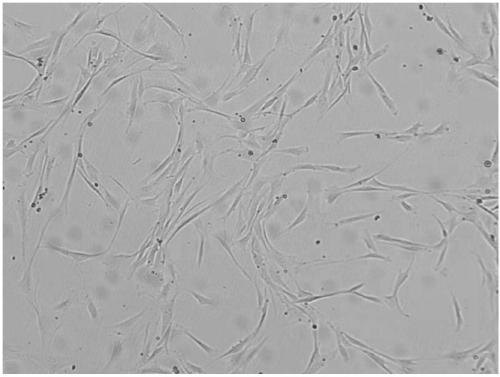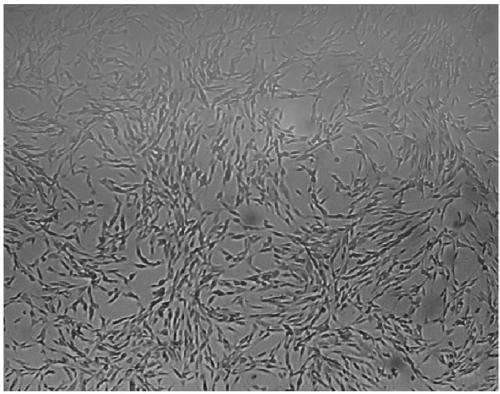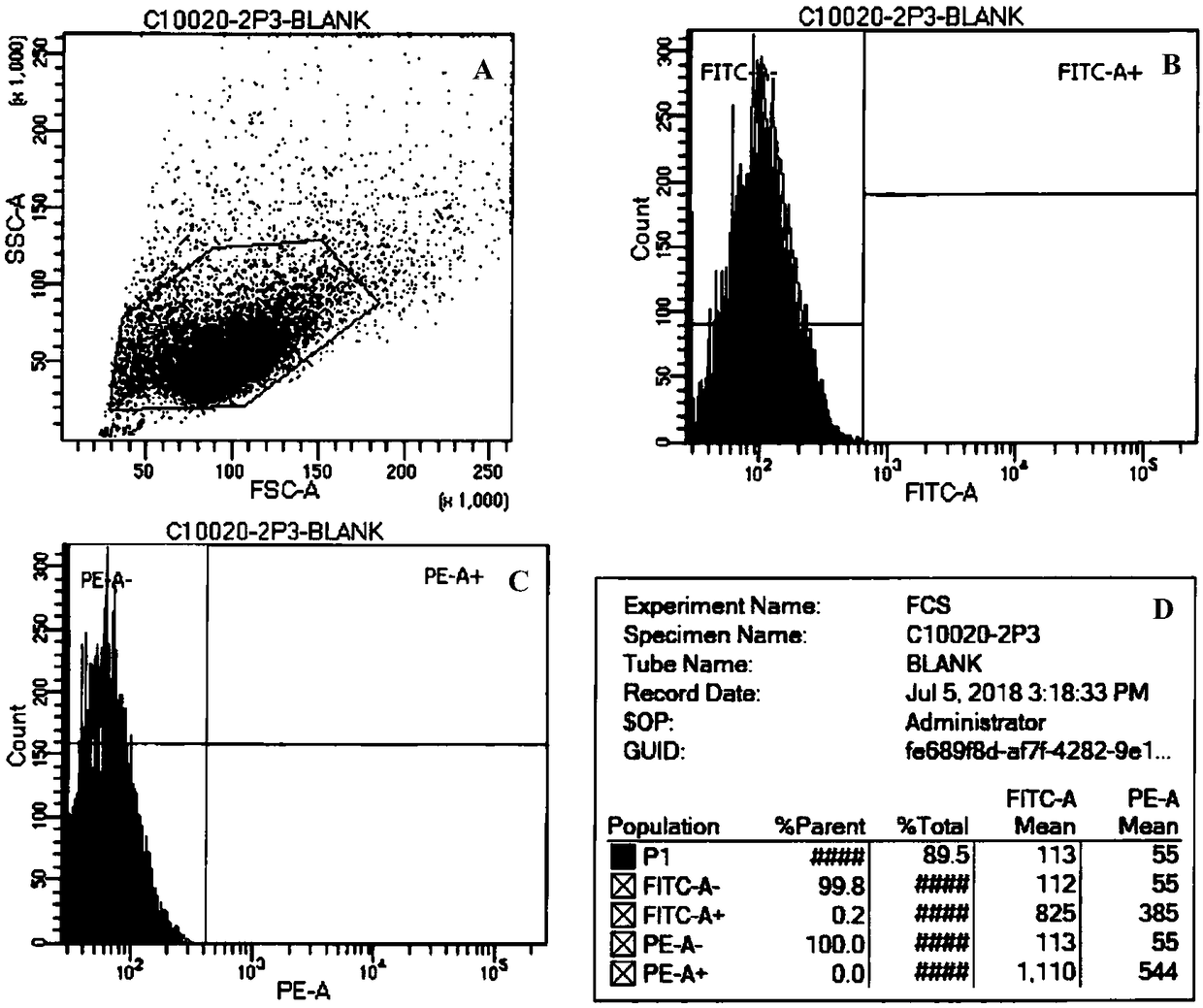Extracting method of dog adipose-derived stem cells, and preparation and application of dog adipose-derived stem cells
A technique for adipose stem cells and an extraction method is applied in the field of preparation of allogeneic adipose stem cells for the treatment of chronic kidney disease in dogs, which can solve the problems of high cost, large body damage in dogs, and long preparation cycle, and achieves low cost, sufficient sources, and reduced The effect of null cells
- Summary
- Abstract
- Description
- Claims
- Application Information
AI Technical Summary
Problems solved by technology
Method used
Image
Examples
Embodiment 1
[0047] Example 1 Isolation of Canine Adipose Stem Cells
[0048] Step 1: Under aseptic conditions, the adipose tissue attached to the peritoneum and bilateral ovaries of adult bitches is surgically removed, the adipose tissue is washed with normal saline, and then disinfected with medical alcohol, and the adipose tissue is placed in a preservation solution at a constant temperature of 2-8°C save. The obtained adipose tissue was washed with 0.9% sodium chloride injection, and repeated 2 to 3 times to remove blood stains. The whole adipose tissue was sterilized by submerging in 75% ethanol. Sodium chloride injection was washed repeatedly to remove residual ethanol. Use sterile surgical scissors to cut the adipose tissue into several sections of about 2-5 cm, and remove the congestion and clots in the small blood vessels of the adipose tissue. Use ophthalmic tweezers to peel off the fascia and blood vessels surrounding the adipose tissue, put it into a sterile plate, add an ap...
Embodiment 2
[0052] Example 2 The cultivation of canine adipose-derived stem cells
[0053] Step 5: P0 generation cell culture: place the above culture bottle in a carbon dioxide incubator for culture, 37°C, 5% CO 2 and saturated humidity for 24 hours to make MSCs adhere to the wall, replace the culture medium to remove non-adherent cells, and then replace the culture medium every 2 to 3 days; when the cell confluency reaches 70 to 90%, use 0.25% trypsin for routine digestion and harvest to obtain For the P0 generation cells, use the self-set freezing procedure to freeze the cells and establish the P0 generation master cell bank;
[0054] Step 6: P1 generation cell culture: the P0 generation cells were divided into about 5×10 3 piece / cm 2 Density inoculation in culture flasks, placed in a carbon dioxide incubator at 37°C, 5% CO 2 Cultivate for no more than 4 days, and replace the medium every 2 to 3 days. During this period, the cell morphology and growth state were observed under a mi...
Embodiment 3
[0057] Example 3 Identification and Safety Inspection of Canine Adipose Stem Cells
[0058] Step 9: The P3 generation cells are further tested for specific surface antigens, differentiation potential identification, endotoxin test and mycoplasma inspection, and the P3 generation cells that can be used to prepare canine allogeneic adipose stem cell preparations for the treatment of canine chronic kidney disease are screened out.
[0059] 1. Identification of cell surface antigens
[0060] Transfer the P3 generation ADSCs sample prepared in Example 2 into the corresponding flow tube, add 1ml PBS to mix well, centrifuge at 500g for 5 minutes, discard the supernatant, and repeat the washing twice; add an appropriate amount of PBS to suspend the cells, filter, count, and The cell concentration was adjusted to (2.0~6.0)×10 6 pcs / ml for use; take out several tributary tubes, add each group of antibodies and isotype control reagents (operate in the dark, see Table 1 for specific reag...
PUM
 Login to View More
Login to View More Abstract
Description
Claims
Application Information
 Login to View More
Login to View More - R&D
- Intellectual Property
- Life Sciences
- Materials
- Tech Scout
- Unparalleled Data Quality
- Higher Quality Content
- 60% Fewer Hallucinations
Browse by: Latest US Patents, China's latest patents, Technical Efficacy Thesaurus, Application Domain, Technology Topic, Popular Technical Reports.
© 2025 PatSnap. All rights reserved.Legal|Privacy policy|Modern Slavery Act Transparency Statement|Sitemap|About US| Contact US: help@patsnap.com



